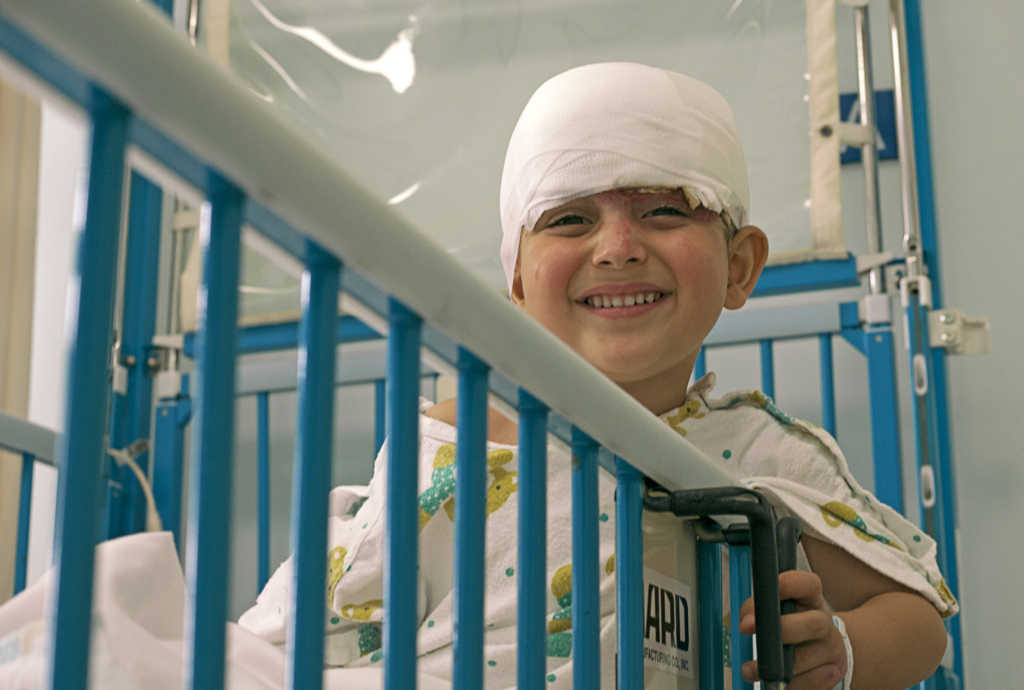The Middle Eastern country of Syria is riddled with destruction, bombings and death. Almost every day, a new tragedy captures headlines across the world, but rarely reported on is one of the country’s most vulnerable groups: disabled children.
WATCH: Syrian Photog Captures Harrowing Footage Immediately After Devastating Terror Attack
Disabled children experience struggles in every country, even here in the United States. In the U.S., however, we have the resources to address those struggles and bring about change — something the people of Syria do not. The International Network for Aid, Relief and Assistance (INARA), an organization dedicated to uplifting vulnerable Syrian children, is looking to change that.
In an interview with Faithwire, the communications manager for INARA explained that his team is excited about starting a new initiative dedicated to helping refugee children with orthopedic conditions, like clubfoot and developmental dislocation of the hip (DDH).
Clubfoot is a congenial birth deformity in which an infant’s foot is turned inward, the severity of it depends on the child, the American Academy of Orthopaedic Surgeons stated on their website.
Developmental dislocation of the hip is also referred to as Dysplasia. This is a birth defect that happens when the “ball” in the “ball-and-socket” joint is loose in the socket, the American Academy of Orthopaedic Surgeons explained in a description of DDH.
In statement released by INARA before the interview with Faithwire, they said, “Children dealing with extreme they struggle to walk. The impact it has on their life is severe – and often means that they withdraw from social interactions for fear of being stared at or bullied by their peers.”
They also noted, “Children with such conditions in Syria would have been able to access free or discounted treatment. However, due to the war they are now unable to do so.”
“There are currently no humanitarian organizations within Lebanon that provide treatment for such orthopedic conditions regularly. The medical treatment needed is lengthy and expensive, and the majority of the refugee population in Lebanon would be able to afford such a a treatment.”
Last month, Al Jazeera reported, there are over one million Syrian refugees living in the bordering country of Lebanon. Most of the refugees are living in informal camps, facing severe levels of poverty.
"Life in refugee camps feels like sitting in a waiting room. Your life is on hold," – Yusra, Syrian refugee who currently lives in #Lebanon pic.twitter.com/jz8uqf0JCr
— اللجنة الدولية للصليب الأحمر في لبنان (@ICRC_lb) April 21, 2017
The INARA project has secured monies from UNICEF and other donors for approximately 15 children to gain mobility so far. However, they still need more money to help children in need of medical attention and suffering from disabilities.



Gough said, “It’s easy for people to look at what has been happening in Syria for the past six years and feel as though there is nothing they can do to help. But there is. By donating to INARA you can help to provide refugee children with medical treatment that can prevent disability and enable mobility.”
“The implications this has on these children and families is phenomenal,” he continued. “Every single child we have treated has showed an increased sense of well being, and showed an improved ability to reintegrate into their communities.”
This is also an opportunity “to show these families that not every door is closed in their face, we can turn them away from despair, and show them that people really do care.”
Click this link to donate to INARA.
—
Other Must-Read Stories:
– Despite Liberation in October, the Iraqi Christian City of Qaraqosh Remains a Ghost Town
– Toddler with Deadly Disease Becomes Federal Officer for a Day
– Young Mom Says ‘Hello’ And ‘Goodbye’ to Baby Carried to Term for Organ Donation



